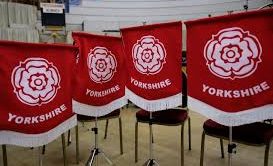LIVE: Welsh Regional Championships 2020 Championship Section
Results
1. Tredegar
2. Cory
3. Llwydcoed
Best Instrumentalist: Ross Dunne – Tenor Horn – Tredegar
Best cornet player: Tom Hutchinson – Cory
Best bass section: Tredegar
Prediction
Overall we’ve had a contest on a very difficult and beautiful piece of music, where every single band has put in the effort needed and delivered 7 good performances. For us, some bands were more emotive and organised in the 2nd movement and paced the bustling faster music better in the first movement. For us Tredegar have got it with that sublime middle movement.
- Tredegar
- Cory
- Llwydcoed
7. Ebbw Valley (Nigel Seaman)
I.
A nice opening, although to. my ears it seems to speed up. and loose its poise. Some of the intricate rhythms in the melody aren’t together. A great trombone sound leads into the faster music.
The music here is well organised and the tempo helps the band to stay together with a good sense of corporate rhythm. Again some issues of intonation detract from some good playing as the 1st movement comes to a close.
II.
Some great pacing and musicality about this. Nigel Seaman is probably the most experienced conductor of the whole weekend, and it shows. The solo euphonium delivers a confident cadenza – he should be very proud of that!
the solo horn and cornet make lovely contributions, as does the solo trombone and everything is organised well to close this movement.
III.
A few moments of unease to get going in this one, but once it gets beyond that it flows well and every section plays with assurance. There are a few moments where everything could be better together, but the band make a beautiful open sound in all of the louder sections.
Overall
A good show this! You can hear the work thats gone into it. Controlled and disciplined. It just needed more care over some small intonation issues and togethernesss.
6. Llwydcoed (Christopher Turner)
I.
A great opening. Good balance of parts and it keeps moving without ever feeling robotic – it’s telling a story. In the faster music some of the details are lost and it feels like the band could be more comfortable with the tempo.
The 6/8 section flows well and is well shaped. the 4/4 section seems scrappier than before and rushes a little. The louder 6/8 has a few splits from upper cornets. This said, the movement comes to a dramatic close. It just needed to grip to the tempo a little more in places.
II.
There’s a tuning discrepancy or two at the beginning, but the music flows well without getting too sentimental. The euphonium solo and cadenza is delivered with style and agility.
The horn cadenza has a few sticky moments, but its a good sound and is paced well. The cornet solo doesn’t linger but is beautiful in tone.
The quiet section flows well and the intonation is clear and secure – I was hoping for a more climactic ff. The trombonist takes his time on his solo to. great effect and the movement ends very well indeed.
III.
The movement bounces along with energy with good dynamic contrasts and neat and tidy playing. Chris Turner is leading his musicians brilliantly, it keeps its pace yet has time to be musical. You can see the band enjoying the music and so they should, its well organised and stylish.
Overall:
Another performance with a good 3rd movement and well organised middle movement. That 1st movement just rushed at times and could’ve been under the fingers better.
5. Northop Silver (John Doyle)
I.
A good opening. The vibraphone might be a little strong at times and sometimes an aggressive edge can be heard at the louder dynamics.
The fast section has good style and flow although not all the details seems to come through and the band seem to rush things at times. There are blemishes and balance issues that upset the story at times, but overall the music is generally well organised.
II.
It’s nice to hear the low muted back row cornets at the opening of the 2nd movement. This flows nicely and the solo euphonium player, Aled Williams, delivers a glorious solo and cadenza. The contribution from baritone has a few blemishes, but the horn delivers securely.
The solo cornet has a few uneasy moments, but he has a fine sound. The quartet leads to the closing section nicely and the band deliver a good quiet sound. The solo trombone has a beautiful sound to bring this middle movement to a close.
III.
The opening of this movement is technically assured. A quiet dynamic with parts moving well together. Some of the aggressiveness of the first movement returns at times.
The euphonium and soprano duet is nicely done with a good accompanying dynamic.The movement gets more confident as it goes along – its like a different band from movement I.
Overall:
A good show from Northop with a dramatic finale that impressed the audience. That said, a few uneasy moments in the 2nd movement and some aggressive spots just might have cost them a consecutive qualification.
4. City of Cardiff (Melingriffith) M1 (Christopher Bond)
I.
A good opening with some impressive loud passages. There are some moments of uneasy intonation as it progresses, but nothing that detracts too much from the story. A nifty trombone concludes the introduction.
As the fast music gets underway there are some clear signs of rushing and not all the semiquaver detail is delivered with assurance. The 6/8 passage loses a shade on the tempo, but there are some lovely contributions from soprano cornet, euphonium and baritone.
There are small niggling errors of togetherness and tuning here and there in amongst some fine playing to close the movement.
II.
A fine opening to movement II with a good balance of melodic lines. The euphonium solo isn’t as robust as some others we have heard today – but the sound is sweet and the interpretation is well thought through.
Christopher Bond has organised the movement beautifully. The solo horn plays her solo brilliantly – it sounds confidant and rich. I think she enjoyed playing it and the band enjoyed hearing it too. Some minor discrepancies in the quartet.
The closing section is quiet, but could perhaps make use of a softer timbre – the ensuing ff is warm and comforting, however. The movement ends well.
III.
Fast yet detailed. The band use their smarts to ensure the details are heard by balancing the sounds and using sensible dynamics. The soprano cornet makes some very impressive contributions and as the music rattles to a close the band can be proud of a performance that showed off their skill.
Overall
A superbly organised middle movement with plenty of emotion and a swashbuckling final movement. There could be some details in the first movement that didn’t quite settle into place though.
3. Cory (Philip Harper)
I.
A great opening, with a brilliantly balanced band sound. The accompanying lines don’t overpower and the melodies are expertly played. Steve Stewart on soprano cornet starts his leg ops early in this one. The tempo is stuck to like glue through out – no time to hang around.
At bar 35 the music goes at a healthy pace. There are slight blips in the horns and there are some moments where the glockenspiel lags behind, but other than that there is a very well organised balance to the music. The band have a huge dynamic range to play with and do so brilliantly in the quieter passages.
II.
Not together to open, but the sounds thereafter are beautiful. A baton-less MD invites his players with upturned palm. The accompanying dynamics are sensational for Glyn William’s euphonium solo. The solo trombone’s glossy tone leads into a superbly interpreted euphonium cadenza. The soloist takes his time and it sounds exquisite.
Everything is just stunningly organised and the solo horn cadenza is delivered with authority before the principal cornet impresses with his sublime tone and virtuosity with his solo. The quartet is beautifully done with a lovely flugel sound.
The closing section doesn’t start perfectly together, but the quiet playing is unreal, as is the warmness of the fortissimo. Chris Thomas delivers a superb trombone solo to close the movement.
III.
The music hurtles along at a superb pace and every last detail is heard. Again, the band uses its dynamic range to an expert level, telling the story of the music with minuscule quiet playing and explosive upper dynamics.
The music takes off at the end – it gets faster and more authoritative as the closing trombone melody brings the music to a hurtling and superb close.
Overall
Philip Harper once again shows how a world class band can deliver fabulous music under his meticulous direction.There were some stunning individual contributions, including Glyn Williams, Tom Hutchinson and Chris Thomas.
2. Tongwynlais Temperance (Carl Saunders)
I.
A slightly slower opening than we have just heard. I’m wanting to hear more of the beautiful dissonance in the horn’s opening melody. The music flows well though, with notable contributions from solo euphonium. Some slight clips in the solo trombone to conclude the introduction.
Bar 35 drives well, with only slight moments on unease. There are just some moments where finer balancing could enhance the picture. The 6/8 section is so tender and well put together and as we get back into the 4/4 the principal cornet and solo euphonium play with their syncopated lines quirkily – its great.
Some moments of unease in the sop detract from some well directed sounds to close the movement. They could perhaps have made more use of the quiet sections in this movement – but overall a neat show.
II.
The opening flows beautifully and the phrasing lends itself to a sumptuous rubato. The solo euphonium has a beautiful sound and played out of his skin on his cadenza – he should be very proud of that.
I can’t help but feel that some of the accompanying sounds could be better organised as the horn delivers a neat solo with only the tiniest of blemishes. Beautiful solo cornet and a well paced quartet lead to the closing section, which could take a further risk with dynamic. The swell to ff is a little harsh, but the movement comes to a good close.
III.
The tempo seems to be just about the extent of what the players can handle to open – with not all detail coming though. The MD has decided to conduct some of this in one in a bar which creates a good sense of phrase. The softer section has notable contributions from soprano cornet, but not all the quaver details are heard as the music hurtles along.
Towards the end the band lifts – they’ve played well and they know it. Time to gallop home with the confidence they have earned.
Overall
Some passages could’ve been better organised and balanced, but that is a show the band can be proud of with much to admire. Josh Dickens on Solo Euphonium definitely deserves a pat on the back.
1. Tredegar (Ian Porthouse)
I.
A great opening sound from Tredegar. It could be argued that the brightness the mutes and the volume of the soprano, repiano and second cornets upset the balance. The fff dynmaics are spectacular though as. isthe phrasing. and togetherness in the euphoniums, baritones and horns. The solo trombone has a. delicious sound.
Bar 35 gets off to an energetic start with a wide dynamic pallet to draw from. The MD is drawing out meticulously detailed playing. The 6/8 section is soft and tender without losing tempo and it gets us neatly into the more bustling 4/4 music. Ian Roberts on soprano cornet makes a simply gorgeous sound and never overpowers his section – he’s a class act.
There are some tiny moments. where the band aren’t completely together which blur an almost perfect picture to close movement 1.
II.
The opening of the 2nd movement is a masterclass in letting the slow music flow. Nothing over-sentimental or drawn out – but beautiful, elegant phrasing. The solo euphonium does a fine job in his opening solo – and without the overuse of vibrato delivers a scintillating cadenza.
What a phenomenal horn sound in this next cadenza. So beautiful, so classy. Not a single blemish, and it is all brilliantly accompanied by the band. World class. The solo cornet answers with only a slight blemish to tarnish what has been a great show thus far. The quartet play well with magical contributions from percussion
Bar 45 is well managed, although the tonguing of slurred notes can be heard. The low As in the cornets on the crescendo might be a little overdone, but the following band fortissimo is tender and impressive. A fine trombone concludes a beautifully read performance.
III.
A superb tempo that doesn’t waver and is so full of detail. In the more reflective section we get a chnace to. hear the soprano and euphonium duet and it doesn’t disappoint. The louder passages are. enhanced by a fine bass trombone and bass team that add a rich depth to the sound.
They’re eating this music for breakfast – it sounds easy peasy in Ian Porthouse’s hands. The charging trombone, euphonium and baritone melody is perfectly balanced and it leads to a superb close.
Overall
A superb opening to the contest with detailed playing from start to finish. Ross Dunne on solo horn was what can be easily described as world class and is well deserving of the applause he received. That’s one to beat!
Anticipation
The Great Hall is filling up here in Swansea ready for Philip Sparke’s ‘A Tale As Yet Untold’. It’s a fantastic piece of music with its impressionistic opening and bustling 1st movement to the fiendishly quick tarantella in the 3rd movement. It is the 2nd movement where we will hopefully see the real virtuosity from Wales’ best euphonium, horn, cornet and baritone players. It should be an emotionally charged journey through each performance.
Draw
Test Piece: A Tale as Yet Untold (Philip Sparke)
Adjudicators: David Hirst and Alan Morrison
Commences: 1.15pm
1. Tredegar (Ian Porthouse)
2. Tongwynlais Temperance (Carl Saunders)
3. Cory (Philip Harper)
4. City of Cardiff (Melingriffith) M1 (Christopher Bond)
5. Northop Silver (John Doyle)
6. Llwydcoed (Christopher Turner)
7. Ebbw Valley (Nigel Seaman)





